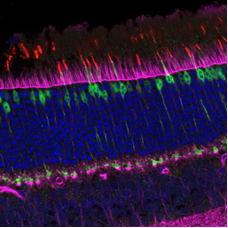Rare Disease Research: Recognising the Importance of the IGC Facilities

Above: Image by Chloe Brotherton, Pleasantine Mill’s lab
A rare disease is defined as a disease that affects less than 1 in 2,000 people in the general population, which is the equivalent of 4 million people worldwide 1. To this day, around 6,000 different rare diseases are known 1. Although a single rare disease may not affect a large population, adding all the rare diseases together shows how essential researching them is.
At the Institute of Genetics and Cancer (IGC), a wide range of rare diseases are studied, from Aicardi-Goutières syndrome to Pierre-Robin syndrome to Ehlers-Danlos syndrome. This institute is a partnership between the MRC Human Genetics Unit, the CRUK Edinburgh Centre, and the Centre for Genomic and Experimental Medicine. All three subunits put together have over 70 labs, each with its own expertise. Although these labs do great research and help understand the underlying mechanisms behind diseases, including rare diseases and cancer, the speed and quality of their research are supported and enhanced by the facilities hidden within the institute.
At the IGC, we are lucky to have experts in various techniques such as flow cytometry, DNA sequencing, mass spectrometry, imaging, HTPU microarrays, etc. Having access to these state-of-the-art machines as well as trained professionals is an extraordinary benefit for all the labs in the institute. This allows researchers to ask novel questions and have a wider range of tools to answer them. For example, the imaging facility enables scientists to look more closely at the anatomy of cilia and decipher why they stop working properly in diseases like Retinitis Pigmentosa. In many labs, cells are used as a model to understand the effects of mutations at molecular and cellular levels. The FACS team can help in the generation of specific stable cell lines that express proteins of interest important in specific rare diseases. Sequencing the genome of patients who have a rare disease is also essential to identify the genetic causes of these diseases and better understand the disease itself.
Overall, the facilities of the IGC are an essential part of the institute, allowing research to progress at a higher rate and enabling this research to reach and help patients with rare diseases more quickly.
- European Commission. “Rare Diseases.” Research and innovation. Accessed February 9, 2024. https://research-and-innovation.ec.europa.eu/research-area/health/rare-diseases_en.



